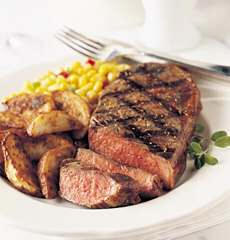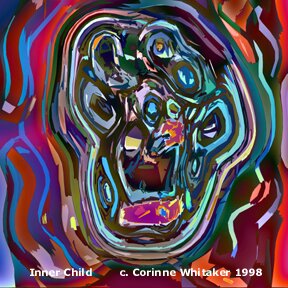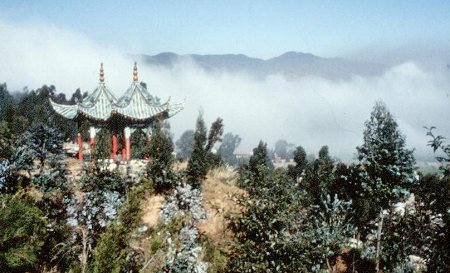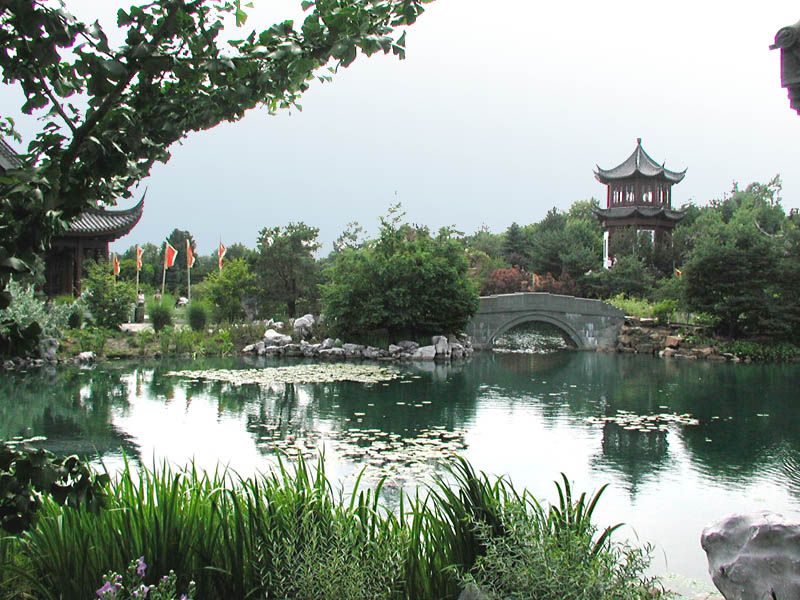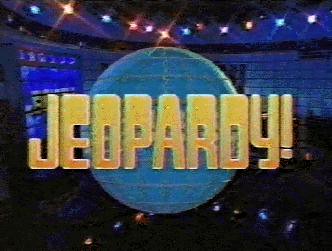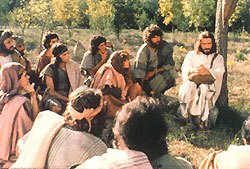[Please see the
Introduction to this series for a brief synopsis of my approach to working with the major trumps of the Tarot. I am hoping to post a new meditation each Saturday. I use meditation here in the philosophical sense of the word, meant to denote an open-ended, free-form exploration of an idea.]

Few cards in the Tarot are as popular, and misunderstood, as
The Lovers. The card has also suffered more changes than most others, usually toward simplicity and away from the original psychological complexity of the image. For most of this series, I have started with the Rider-Waite version of each card because it is the best known, but for the Lovers, I want to start with the Marseille version.
This is the version of the card Sallie Nichols works from in
Jung and Tarot, but I think she generally misreads the card in some ways.
The image shows a young man (our friend,
the Fool) standing between two women. The woman on his left (remember that the left side is the unconscious side) appears to be young, like him, and has her hand on his heart. The woman on his right appears to be much older than the two others, and she has her hand on his shoulder.
The young man's body is positioned toward the younger woman, while he looks at the older woman. The body, again, is preconscious and has its own wisdom. It seems to favor the young woman. The head is the seat of reason and social consciousness -- it still feels tied to the matronly image.
Hovering above the scene we have Cupid, with his arrow aimed at the young couple. Cupid is a notorious trickster figure, so it is likely that the person hit with his arrow will experience unexpected outcomes.
Nichols reads this card as the young man having to choose between two women with whom he has a definite connection. True enough. He seems torn in having to make this decision -- with his head favoring one option and his heart favoring another. But she supposes that either woman could be a romantic interest. I don't think this is the case.
What we have here, especially within the context of the cards that have come before, is our young Fool having to choose between his mother and his first love. The woman to his right is clearly matronly and not an obvious love interest. She represents the Great Mother of the
Empress card. The woman to his left is young and beautiful, like him, and represents the
High Priestess, the anima.
The young man is having to choose between the feminine mother who gave him life and the internal feminine of his soul, which has been projected outward as the young woman. This is, in some respects, the classic Freudian conflict all boys must face in individuating from the mother.

[While the Fool is nearly always gendered as male in the Tarot, please understand that I will usually think of our young traveler as a s/he. So in the case of the Lovers, the card could be rendered with a female protagonist and two males images, representing the young woman's need to break away from the father and embrace her own inner animus.
The card to the right shows a young woman walking between two men. The older man to her left seems highly protective, while the younger man to her right seems to be a suitor. Like the other card, she looks at her father but walks arm in arm with the younger man.
This card series was drawn by Fernando Gumppenberg, of Milan, in around 1820. It is unique among the decks I have seen in presenting a female protagonist.]
Earlier depictions of the Lovers did not contain this element of choice (this may be an image/theme that predates the actual Tarot), and later images have done away with the parental figure and added in an angel of some sort (Raphael in the Rider-Waite deck).

Rider-Waite revisions the Lovers as Adam and Eve in the Garden of Eden, replete with the Tree of Life behind Adam and the Tree of the Knowledge of Good and Evil behind Eve (notice the serpent). This card is in keeping with the Judeo-Christian theme in more recent versions of the Tarot, but it brings with it a lot of baggage associated with the Eden story. It offers a very prepersonal version of love, which is fitting for this stage of the Fool's journey.
Many people equate love with sexuality. Yet few of these people have any idea about how to elevate physical love to a higher plane of consciousness.
Tantra is a popular subject in the West, but most who buy these books or go to the seminars do not have a spiritual practice to support this variation of love.
In Buddhism, desire is the source of suffering. Yet the Buddha recognized that many of his followers would not or could not jettison family life to follow his path. For these people he taught the
dharmachakra of the four noble truths, what is more commonly known as the "common vehicle," also known as the
Hinayana.
Buddha taught that compassion is love plus meditation. Physical love is the lowest expression, while compassion is the highest expression, with love falling in the middle. The Osho Zen version of this card says the following:
 Very few people know what love is. Ninety-nine percent of people, unfortunately, think sexuality is love - it is not. Sexuality is very animal; it certainly has the potential of growing into love, but it is not actual love, only a potential....
Very few people know what love is. Ninety-nine percent of people, unfortunately, think sexuality is love - it is not. Sexuality is very animal; it certainly has the potential of growing into love, but it is not actual love, only a potential....
If you become aware and alert, meditative, then sex can be transformed into love. And if your meditativeness becomes total, absolute, love can be transformed into compassion. Sex is the seed, love is the flower, compassion is the fragrance.
I like that last image. It provides a basic "levels" approach (prepersonal, personal, postpersonal) to understanding how love functions in its different forms and at different stages of development. Of course, an integral model of love encompasses all three levels simultaneously.
But our young Fool is not ready for that yet. S/he is still struggling to free him/herself from the familial bonds so that ego development may continue as it needs to.

Perhaps it might add a little to look at the signifigance of the number six. In Christian esoterica, six is one less than perfection (seven), thus making it evil. 666 is the sign of the beast in Revelations. In the Tarot, the Devil is 15, whose digits add up to six. Seems the Christians have a thing about six.
On the other hand, Pythagoras called six the perfect number because it is the sum of one, two, and three. Six is also the number of completion in the Old Testament (the world was created in six days). The six-pointed Star of David is actually two triangles, the fire triangle (pointing down) and the water triangle (pointing up). The union of these two is the union of masculine (fire) and feminine (water).
This six-pointed star is also the sign of Vishnu (according to Nichols), representing the mystic marriage of Shiva and Shakti. It is the only number considered to be both masculine and feminine. Seems to be the perfect number for the Lovers.

The Christian associations with six being evil seems to support the shadow element of the Lovers archetype as it manifests in our largely Christian culture. Love and sex always seems to have a dark subtext based in the whole Eve and the apple story. Satan tricked humans into becoming sexual beings, thus making all sexual activity subject to that shadowy past.
This is such a perversion of the truth of sexuality that it would be laughable if it were not so pervasive in our culture. The Lovers card stands as the first innocent blush of sexual longing in the older versions of the card. As the Christian meme loses its power in the coming centuries, love and sexuality will eventually be freed from this shadowy association.
But for now, we are nearing the end of the first sequence of cards. There is only The Chariot left in the pre-personal realm. The fool has come a long way. S/he has worked through many of the young ego's psychological needs and is now learning to break free into the world. The true individuation process is about to begin.












